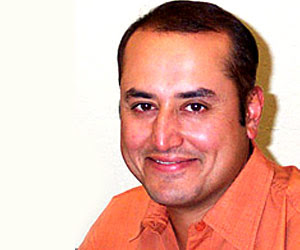=»
As Far As I Know
AFK =» Away From Keyboard
ASAP =» As Soon As Possible
BAS =» Big A$$ Smile
BBL =» Be Back Later
BBN =» Bye Bye Now
BBS =» Be Back Soon
BEG =» Big Evil Grin
BF =» Boyfriend
BIBO =» Beer In, Beer Out
BRB =» Be Right Back
BTW =» By The Way
BWL =» Bursting With Laughter
C&G =» Chuckle and Grin
CICO =» Coffee In, Coffee Out
CID =» Crying In Disgrace
CNP =» Continued (in my) Next Post
CP
=»
Chat Post(a chat message)
CRBT =» Crying Real Big Tears
CSG =» Chuckle Snicker Grin
CYA =» See You (Seeya)
CYAL8R =» See You Later (Seeyalata)
DLTBBB =» Don't Let The Bed Bugs Bite
EG =» Evil Grin
EMSG =» Email Message
FC =» Fingers Crossed
FTBOMH =» From The Bottom Of My Heart
FYI
=»
For Your Information
FWIW =» For What It's Worth
GAL =» Get A Life
GF =» Girlfriend
GFN =» Gone For Now
GMBA =» Giggling My Butt Off
GMTA =» Great Minds Think Alike
GTSY =» Glad To See You
H&K =» Hug and Kiss
HABU =» Have A Better 'Un
HAGN
=»
Have A Good Night
HAGU =» Have A Good 'Un
HHIS =» Hanging Head in Shame
HUB =» Head Up Butt
IAE =» In Any Event
IC =» I See
IGP =» I Gotta Pee
IMNSHO =» In My Not So Humble Opinion
IMO =» In My Opinion
IMCO =» In My Considered Opinion
IMHO
=»
In My Humble Opinion
IOW =» In Other Words
IRL =» In Real Life
IWALU =» I Will Always Love You
JMO =» Just My Opinion
JTLYK =» Just To Let You Know
KIT =» Keep In Touch
KOC =» Kiss On Cheek
KOL =» Kiss On Lips
L8R =» Later
L8R G8R
=»
Later 'Gater
LHM =» Lord Help Me
LHO =» Laughing Head Off
LHU =» Lord Help Us
LMAO =» Laughing My A$$ Off
LMSO =» Laughing My Socks Off
LOL =» Laugh Out Loud
LSHMBB =» Laughing So Hard My Belly is Bouncing
LSHMBH =» Laughing So Hard My Belly Hurts
LSHTTARDML =» Laughing So Hard The Tears Are Running Down My Leg
LTNS
=»
Long Time No See
LTS =» Laughing To Self
LUWAMH =» Love You With All My Heart
LY =» Love Ya
MTF =» More To Follow
NRN =» No Reply Necessary
NADT =» Not A Darn Thing
OIC =» Oh, I See
OL =» Old Lady (significant other)
OM =» Old Man (significant other)
OTOH
=»
On The Other Hand
OTTOMH =» Off The Top of My Head
PDS =» Please Don't Shoot
PITA =» Pain In The A$$
PM =» Private Message
PMFJI =» Pardon Me For Jumping In
PMP =» Peed My Pants
POAHF =» Put On A Happy Face
QSL =» Reply
QSO =» Conversation
QT
=»
Cutie
ROFL =» Rolling On Floor Laughing
ROFLAPMP =» ROFL And Peeing My Pants
ROFLMAO =» ROFL My A$$ Off
ROFLMAOAY =» ROFLMAO At You
ROFLMAOWTIME =» ROFLMAO With Tears In My Eyes
ROFLUTSROFL =» Unable to Speak
RTFM =» Read The F****** Manual!
SETE =» Smiling Ear To Ear
SHID =» Slaps Head In Disgust
SNERT
=»
Snot-Nosed Egotistical Rude Teenager
SO =» Significant Other
SOT =» Short Of Time
SOTMG =» Short Of Time Must Go
SWAK =» Sealed With A Kiss
SWAS =» Scientific Wild A$$ Guess
SWL =» Screaming with Laughter
SYS =» See You Soon
TA =» Thanks Again
TGIF =» Thank God It's Friday
TCOY
=»
Take Care Of Yourself
TILII =» Tell It Like It Is
TNT =» Till Next Time
TOY =» Thinking Of You
TTFN =» Ta Ta For Now
TTYL =» Talk To You Later
WAS =» Wild A$$ Guess
WB =» Welcome Back
WTH =» What/Who The Heck (or sub an 'F' for the 'H')
YBS =» You'll Be Sorry
YG =» Young Gentleman
YL =» Young Lady
YM =» Young Man
:-|
=»
Ambivalent
o:-) =» Angelic
>:-( =» Angry
|-I =» Asleep
(::()::) =» Bandaid
:-{} =» Blowing a Kiss
\-o =» Bored
:-c =» Bummed Out
|C| =» Can of Coke
|P| =» Can of Pepsi
:( )
=»
Can't Stop Talking
:*) =» Clowning
:' =» Crying
:'-) =» Crying with Joy
:'-( =» Crying Sadly
:-9 =» Delicious, Yummy
:-> =» Devilish
;-> =» Devilish Wink
:P =» Disgusted (sticking out tongue)
:*) =» Drunk
:-6
=»
Exhausted, Wiped Out
:( =» Frown
\~/ =» Full Glass
\_/ =» Glass (drink)
^5 =» High Five
{{{name}}} =» Hug (cyber hug)
{{{{{{name}}}}}} =» Hug (warm cyber hug)
{{ }}:** =» Hugs and Kisses
:-I =» Indifferent
:-# =» Lips are Sealed
:~/
=»
Mixed Up
:-O =» Mouth Open (Surprised or Shocked)
(_) =» Mug (coffee, beer)
@[_]~~ =» Mug of HOT Coffee or Tea
**** =» Popcorn
<<{:}} =» Ice cream
&&&& =» Pretzels
@}--{--{-- =» Rose
:-@
=» Screaming
:-) =» Smile
0;-)-x-< =» The Saint (Thanks to Karey Ennever)
^
=»
Thumbs Up
:-& =» Tongue Tied
:-\ =» Undecided
;-) =» Wink
|-O =» Yawning
c[T] =» cup of tea
c[C] =» cup of coffee
(%>
=»
pizza
,,l, =» the finger
>^-^< =» cat
(_\_)(_|_)(_/_) =» dancing ass off
:-Þ~ =» drooling
?€?€ =» hiding, staring in the dark.
{\o/} =» angel
:-------) =» Viagra smile





